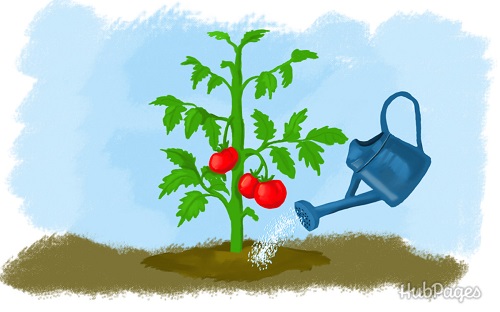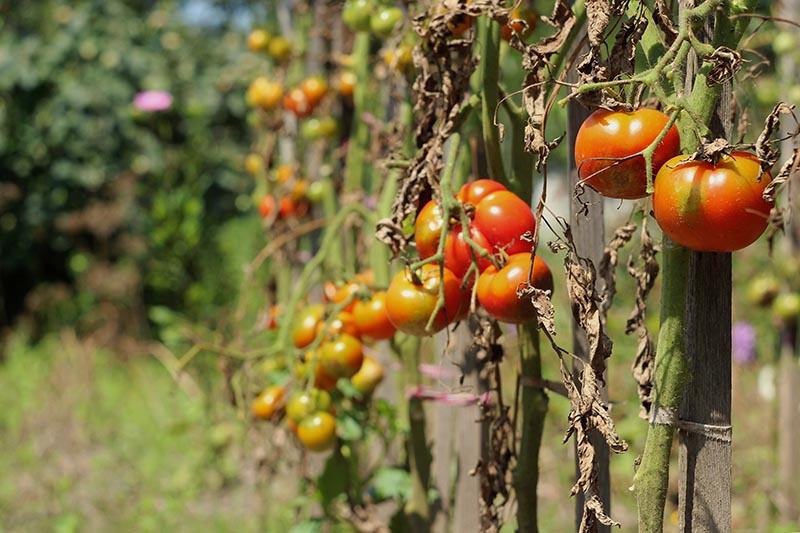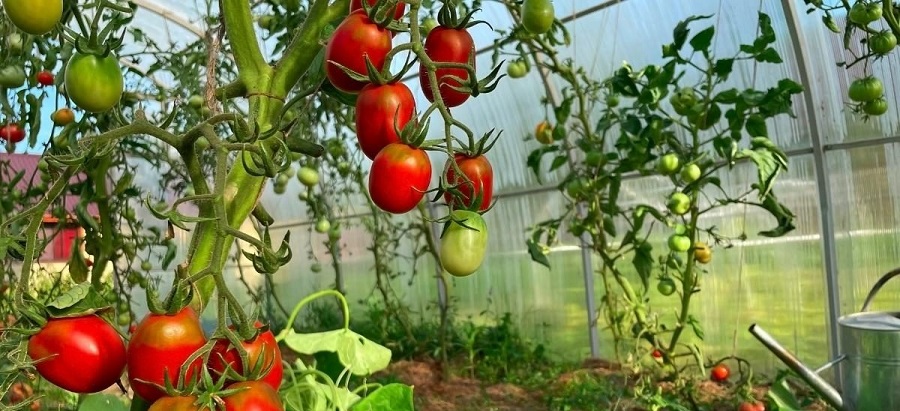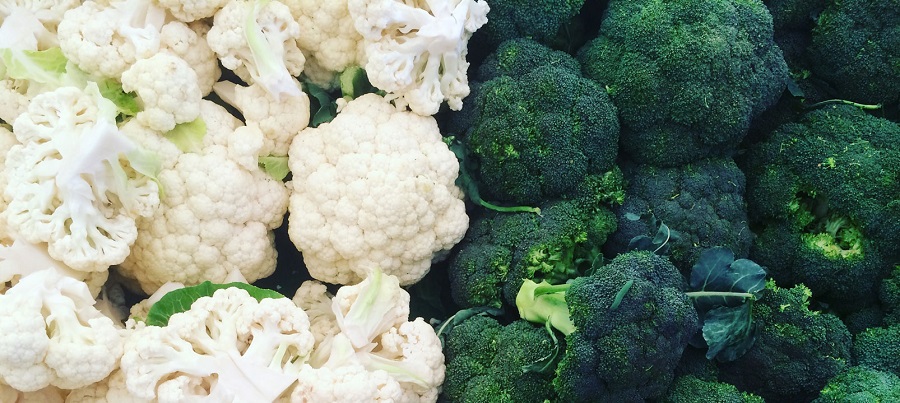What are the best types of soil for growing tomatoes in your backyard?
The best type of soil for growing tomatoes in your backyard is a well-draining soil that is rich in organic matter. Ideally, the soil should be loose and crumbly, allowing air and water to circulate freely around the roots. A pH level of 6.0 to 7.0 is ideal for most tomato varieties. Adding compost, aged manure, or other organic materials to the soil can help improve its structure and fertility, providing the nutrients that tomato plants need to thrive. Avoid using heavy clay soils or soils that are excessively sandy, as they may not provide the proper drainage or nutrient balance for optimal tomato growth.
How often should you water your tomato plants and how much water do they need?

The frequency and amount of watering your tomato plants need will depend on several factors, such as weather conditions, soil type, and the stage of growth of the plant. Generally, tomato plants need about 1 to 2 inches of water per week, either from rainfall or irrigation. However, it's important to avoid overwatering, which can lead to root rot and other fungal diseases.
When watering, it's best to apply water directly to the soil around the plant's base, rather than on the leaves or fruit. This helps to prevent diseases and also ensures that the water reaches the roots where it's needed most. Watering deeply and infrequently is generally recommended, rather than frequent shallow watering, as this encourages the roots to grow deeper into the soil.
During the hot summer months, when the weather is dry, you may need to water your tomato plants more frequently to prevent them from becoming too dry. It's also important to note that container-grown tomato plants may need more frequent watering than those grown in the ground, as the soil in containers can dry out more quickly.
What are some common tomato plant diseases and how can you prevent and treat them?

There are several common diseases that can affect tomato plants, including:
Early blight: This fungal disease causes dark spots on the leaves, stems, and fruit. To prevent early blight, avoid watering the leaves and keep the area around the plant clean and free of debris. If early blight does occur, remove the affected leaves and apply a fungicide to the plant.
Late blight: This fungal disease causes a white mold on the leaves, stems, and fruit. It can be prevented by avoiding overhead watering and providing good air circulation around the plant. If late blight occurs, remove the affected leaves and apply a fungicide to the plant.
Fusarium wilt: This soil-borne fungal disease causes the leaves to yellow and the plant to wilt. To prevent fusarium wilt, rotate crops every year and avoid planting tomatoes in soil that has previously been infected. There is no effective treatment for fusarium wilt, so infected plants should be removed and destroyed.
Verticillium wilt: This soil-borne fungal disease causes the leaves to wilt and turn yellow. To prevent verticillium wilt, rotate crops every year and avoid planting tomatoes in soil that has previously been infected. There is no effective treatment for verticillium wilt, so infected plants should be removed and destroyed.
Tomato mosaic virus: This viral disease causes mottled leaves and stunted growth. To prevent tomato mosaic virus, avoid smoking around tomato plants and wash your hands before handling them. There is no effective treatment for tomato mosaic virus, so infected plants should be removed and destroyed.
Overall, prevention is the best way to avoid tomato plant diseases. This includes choosing disease-resistant tomato varieties, keeping the area around the plant clean, and avoiding overwatering. If you do notice signs of disease, act quickly to remove affected leaves and apply the appropriate treatment.
When is the best time to plant tomatoes in your backyard?
The best time to plant tomatoes in your backyard depends on the climate and weather conditions in your area. In general, tomato plants need warm soil and air temperatures to grow and produce fruit. In most regions, the optimal time to plant tomatoes is in the spring, after the threat of frost has passed and the soil has warmed up to at least 60°F (15.6°C).
If you live in a colder climate or an area with a shorter growing season, you may need to start your tomato plants indoors several weeks before the last frost date. This allows the plants to get a head start and develop strong root systems before being transplanted outside.
It's also important to consider the variety of tomato you are planting when deciding on the best time to plant. Some tomato varieties, such as determinate or early-maturing varieties, are better suited for cooler climates and can be planted earlier in the season. Other varieties, such as indeterminate or late-maturing varieties, require warmer temperatures and may be better suited for later planting dates.
Overall, it's important to pay attention to the weather and soil conditions in your area when deciding on the best time to plant tomatoes in your backyard.
What are the best fertilizers and nutrients for tomato plants?

Tomato plants need a variety of nutrients to grow and produce healthy fruit, including nitrogen, phosphorus, potassium, calcium, and magnesium. While the soil may contain some of these nutrients naturally, it's often necessary to supplement with fertilizer to ensure optimal growth and fruit production.
Here are some of the best fertilizers and nutrients for tomato plants:
Compost: Compost is a rich source of organic matter and nutrients that can improve soil structure and fertility. Adding compost to the soil can help to provide the nutrients that tomato plants need to thrive.
Nitrogen: Nitrogen is an essential nutrient for plant growth and is often deficient in garden soils. Adding a nitrogen-rich fertilizer, such as blood meal or fish emulsion, can help to provide the necessary nitrogen for tomato plants.
Phosphorus: Phosphorus is important for root growth and fruit production. Adding a phosphorus-rich fertilizer, such as bone meal or rock phosphate, can help to provide the necessary phosphorus for tomato plants.
Potassium: Potassium is important for plant growth and stress tolerance. Adding a potassium-rich fertilizer, such as potassium sulfate or greensand, can help to provide the necessary potassium for tomato plants.
Calcium: Calcium is important for strong cell walls and can help to prevent blossom end rot. Adding a calcium-rich fertilizer, such as gypsum or limestone, can help to provide the necessary calcium for tomato plants.
When using fertilizers, it's important to follow the manufacturer's instructions and avoid over-fertilizing, which can lead to nutrient imbalances and other problems. Additionally, it's important to regularly test the soil to ensure that the nutrient levels are balanced and adjust the fertilization accordingly.
How do you prune and support tomato plants to maximize their growth?
Pruning and supporting tomato plants are important steps in maximizing their growth and fruit production. Here are some tips for pruning and supporting tomato plants:
Pruning: Tomato plants should be pruned to remove the suckers, which are the small shoots that grow in the crotch between the stem and a branch. Suckers take away nutrients from the main stem and can reduce fruit production. Use a sharp pair of pruning shears to remove suckers when they are small, before they become too large and difficult to remove.
Supporting: Tomato plants need support to keep them upright and prevent the fruit from touching the ground, which can lead to rot and disease. There are several ways to support tomato plants, including using stakes, cages, or trellises. Staking involves driving a wooden or metal stake into the ground beside the plant and tying the stem to the stake with a soft tie, such as twine or cloth. Caging involves placing a wire cage around the plant and securing the stem to the cage as it grows. Trellising involves using a string or wire to support the stem as it grows upward.
Pruning for air circulation: In addition to removing suckers, it's important to prune the lower branches of the tomato plant to improve air circulation and reduce the risk of disease. Remove any leaves or branches that are touching the ground or close to the soil surface, as these are more susceptible to disease.
Timing: Pruning and supporting should be done early in the growing season, before the plant becomes too large and difficult to manage. Regularly monitor the plant and adjust the supports as needed to ensure that the stem is well-supported and the fruit is not touching the ground.
By following these tips for pruning and supporting tomato plants, you can help to maximize their growth and fruit production, leading to a bountiful harvest of delicious tomatoes.
What are some common pests that can affect tomato plants and how can you control them?
There are several common pests that can affect tomato plants and reduce their growth and fruit production. Here are some of the most common pests and how to control them:
Aphids: Aphids are small, soft-bodied insects that feed on the sap of tomato plants. They can cause stunted growth and yellowing of leaves. To control aphids, spray the plant with a strong stream of water to dislodge the insects, or use an insecticidal soap or neem oil spray.
Tomato hornworms: Tomato hornworms are large, green caterpillars that can quickly strip a tomato plant of its leaves. To control hornworms, handpick the caterpillars from the plant and destroy them, or use a biological control, such as Bacillus thuringiensis (Bt) spray.
Whiteflies: Whiteflies are small, winged insects that feed on the undersides of leaves and can cause yellowing and stunted growth. To control whiteflies, use an insecticidal soap or neem oil spray, or introduce natural predators, such as ladybugs or lacewings.
Spider mites: Spider mites are tiny, sap-sucking insects that can cause yellowing and webbing on the leaves of tomato plants. To control spider mites, spray the plant with a strong stream of water to dislodge the insects, or use an insecticidal soap or neem oil spray.
Cutworms: Cutworms are caterpillars that feed on the stems of tomato plants, cutting them off at ground level. To control cutworms, use physical barriers, such as collars made from cardboard or aluminum foil, around the base of the plant, or use a biological control, such as Bacillus thuringiensis (Bt) spray.
Slugs and snails: Slugs and snails can feed on the leaves and fruit of tomato plants, leaving behind large holes and damage. To control slugs and snails, use physical barriers, such as copper tape or diatomaceous earth, around the base of the plant, or use a bait, such as beer or a commercial slug and snail bait.
By regularly monitoring your tomato plants for pests and taking steps to control them, you can help to ensure healthy growth and a bountiful harvest.
What are the best tomato varieties for different climates and growing conditions?
Choosing the right tomato variety for your growing conditions is important for ensuring a successful harvest. Here are some tomato varieties that are well-suited for different climates and growing conditions:
Hot and dry climates: If you live in a hot and dry climate, choose tomato varieties that are heat-tolerant and have a shorter growing season, such as Early Girl, Celebrity, or Champion.
Humid climates: If you live in a humid climate, choose tomato varieties that are disease-resistant, such as Better Boy, Big Beef, or Mountain Pride.
Cold climates: If you live in a cold climate, choose tomato varieties that have a short growing season and can tolerate cooler temperatures, such as Glacier, Early Cascade, or Siberia.
Container gardening: If you are growing tomatoes in containers, choose varieties that are compact and bushy, such as Patio, Bush Early Girl, or Tiny Tim.
Low-light conditions: If you are growing tomatoes in an area with low light conditions, choose varieties that are tolerant of shade, such as Sun Gold, Black Cherry, or Amish Paste.
Heirloom varieties: Heirloom tomato varieties are known for their unique flavors and colors, but they may require more attention and care than other varieties. Some popular heirloom varieties include Brandywine, Cherokee Purple, and Yellow Pear.
When choosing a tomato variety, be sure to consider your specific growing conditions and the amount of care and attention you are able to provide. By selecting the right tomato variety, you can increase your chances of a successful harvest.
How do you harvest and store tomatoes properly to ensure maximum freshness and flavor?

Harvesting and storing tomatoes properly is important for ensuring maximum freshness and flavor. Here are some tips for harvesting and storing tomatoes:
Harvesting: Tomatoes are ready to harvest when they are fully ripe and have a deep, uniform color. Gently twist or cut the stem of the tomato to remove it from the plant. Avoid pulling or tugging on the fruit, as this can damage the plant and reduce its productivity.
Ripening: If your tomatoes are not fully ripe when you harvest them, you can ripen them indoors by placing them in a paper bag with a ripe banana or apple. The ethylene gas produced by the fruit will help to ripen the tomatoes more quickly.
Storing: Tomatoes should be stored at room temperature, away from direct sunlight. Do not refrigerate tomatoes, as this can cause them to lose flavor and texture. Instead, store them in a single layer in a cool, dry place, such as a pantry or cellar.
Freezing: If you have an abundance of tomatoes and want to store them for later use, you can freeze them whole or in pieces. Simply blanch the tomatoes in boiling water for a few seconds, then shock them in ice water to stop the cooking process. Remove the skins, core the tomatoes, and place them in a freezer-safe container. Frozen tomatoes can be used in sauces, stews, and soups.
By following these tips, you can help to ensure that your tomatoes are fresh, flavorful, and ready to use whenever you need them.


